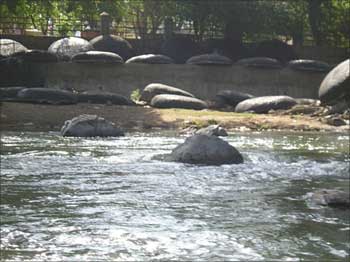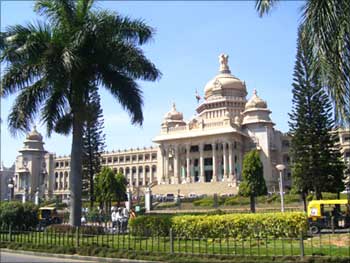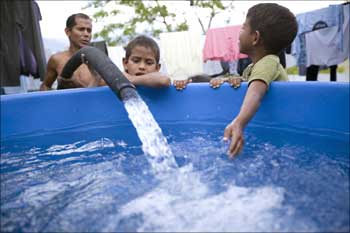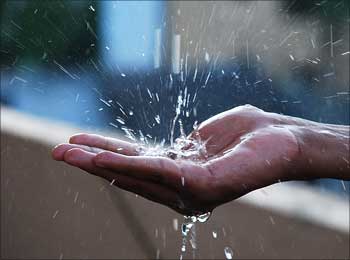
Bengaluru, which draws all its drinking water from the Cauvery, has been lauded as a model city for its well-metered water supply system and an effective complaint redress mechanism.
The city, also an information technology hub, has metered its water supply and made its revenue collection allegedly leak-proof, with solutions provided by IT companies in its 580,000 water connections in a population of about 7.4 million.
But Bengaluru is now on an expansion mode, with a new supply line being readied for the Greater Bengaluru City Corporation, which will include seven city municipalities and one town municipality.
To meet its future requirement, the city is looking beyond the Cauvery. It is examining the options of supplying water tapped through rainwater harvesting, as well as a different model for funding the new project.
further. . .

There are various options for managing supplies, including end treatment, source treatment and roof water harvesting, says K V Raju, economic advisor to the chief minister of Karnataka, and professor and head, Centre for Ecological Economics and Natural Resources of the Institute for Social and Economic Change.
He says these could take care of 40 per cent of the needs of the city, which receives about 1,000 millimetre of rains every year.
In addition, recycled water would ensure there is lot available for local consumption. But, for that we will need to lay a second pipeline to deal with the accessibility issue, says Raju.
The actual demand-supply gap for water in the city is around 10 per cent as far as the Bengaluru Water Supply and Sewerage Board is concerned. But, a significant amount of water distress is seen in the city because of the private layouts and developments that have come up around the city.

Despite the issues pertaining to water supply, Bengaluru is said to have the best metered water connections among the metros. "No city in India has metered better than Bengaluru. This ensures better accountability and revenue models," said Raju.
The current per capita water supply in Bengaluru is 100 to 125 (gross) litres per capita per day, which is below the national standard of 150 LPCD. The per capita availability of water for the vast majority of poor people in Bengaluru is only 40-45 LPCD. The gross demand for the city's population is 900 million litres a day. However, BWSSB is able to supply only about 810 MLD.
According to M N Tippeswamy, a retired chief engineer of BWSSB and now a consultant with the board, there is need for a catchment area authority in Bengaluru, like the Sydney Catchment Authority in Australia. But, the multiplicity of agencies is a hurdle to any projects for protecting the catchment areas.
BWSSB spends 55 per cent of its budget on power, 12 per cent on establishment costs, 3 per cent on chemicals, while revenue expenditure makes for about 15 per cent and rest goes on repayments.

Reforms
The reforms undertaken by BWSSB are the first steps towards increasing its financial resources, enabling an investment in the automation of systems such as accounting processes.
Administrative reforms have set the pace for the financial reforms at BWSSB, as well as for streamlining its accounting processes. Meanwhile, the utility also worked on improving its relationship with the public.
"The provision of spot billings and 24-hour automated payment kiosks has increased customer friendliness," said a top ranking official. The Board is also moving towards adopting international accounting standards to improve its credit ratings.
Supplies
About 90 per cent of the water supplied by the BWSSB comes from the river Cauvery. Water is pumped over a distance of about 100 km to the city, which is 3,000 feet above sea level. The scheme nominally supplies 810 MLD to the city.
The second phase of Cauvery Stage-IV, which is under construction, is expected to enhance the water supply by another 500 MLD.